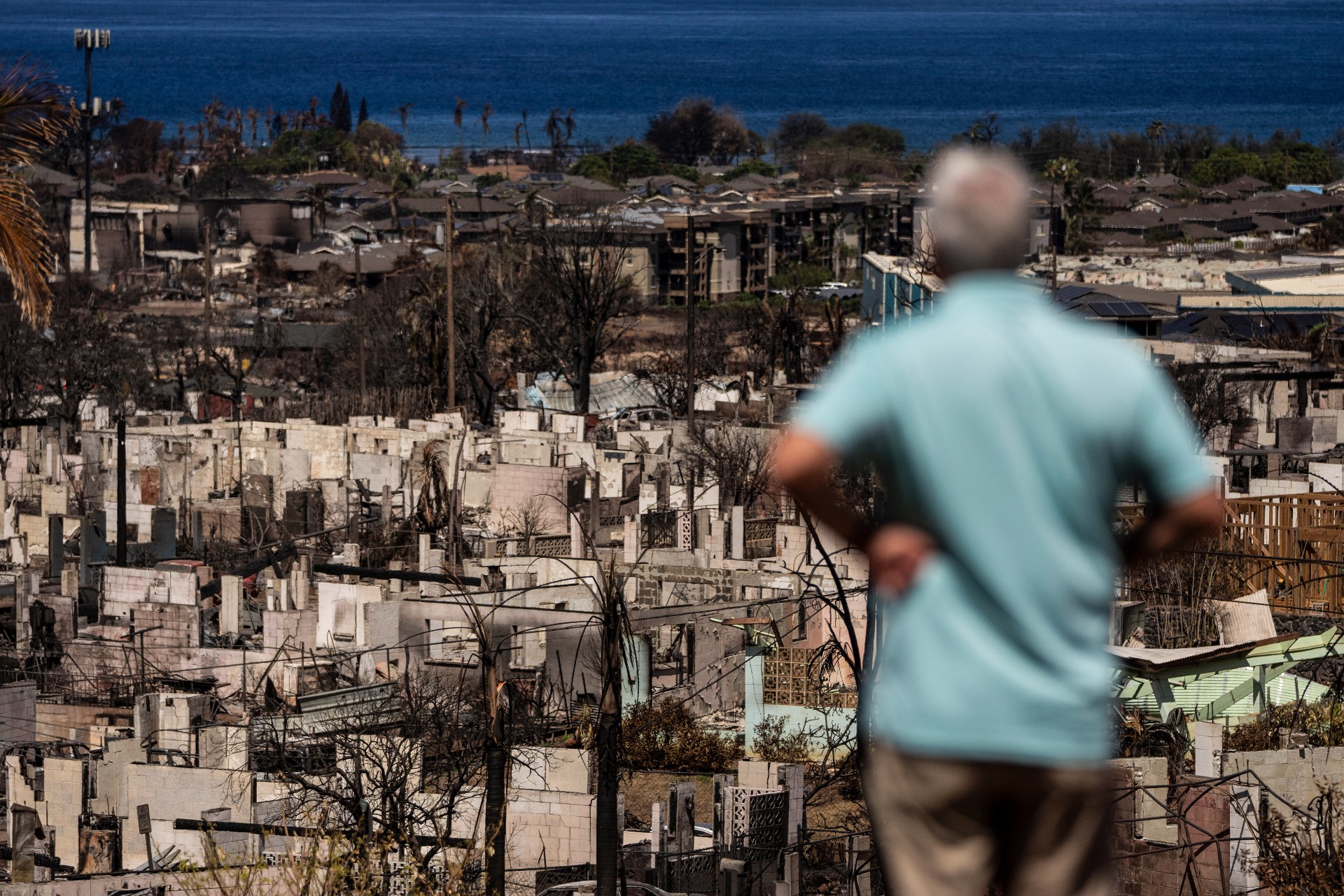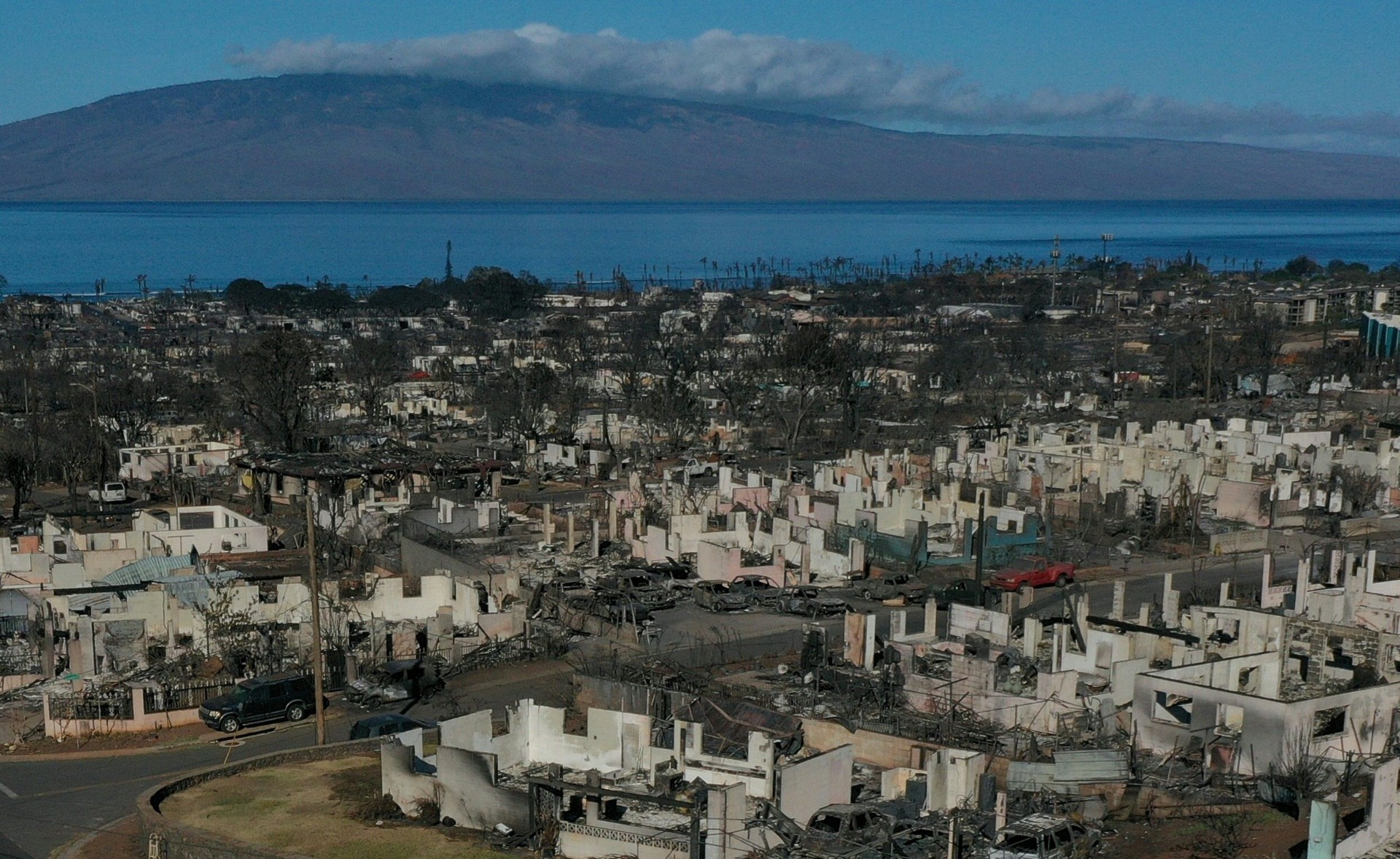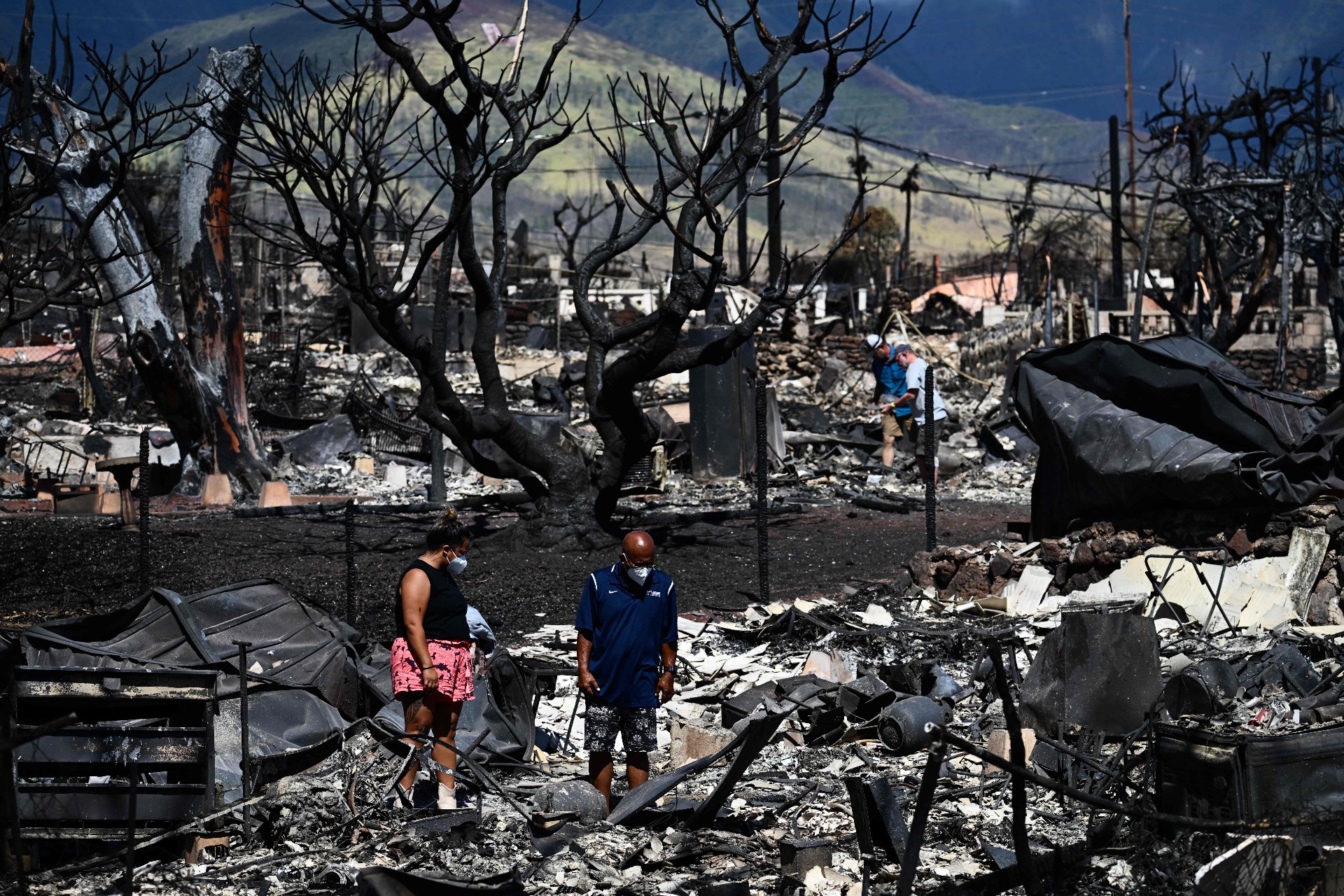Maui was once a Hawaiian dreamland covered with lush green vegetation.
However, the Lahaina wildfire has reduced the once-vibrant tourist site and historic town into ashes. The fire has killed at least 114 people and burned about 1,000 acres by August 20.
Questions and doubts arouse about this fatal fire.

(Photo/Xinhua)
Silent robust siren system
The Hawaiian island Maui lies near the center of the Pacific plate and has endured frequent earthquakes, tsunamis, and volcanic eruptions. Therefore, the largest single integrated public safety outdoor siren system in the world with 400 sirens and monthly testing in Hawaii. Under the framework of the all-hazard siren system, there are 80 sirens in Maui to alert residents of emergencies.
Nevertheless, the omnipotent siren system was silent when the fire broke out.
Maui's sirens were not activated to warn residents of the deadly fire and nobody at the state and nobody at the county attempted to activate those sirens, according to CNN on August 13. The reason why the local siren system failed to be activated, according to Rep. Jill Tokuda, a Democrat of the Hawaiian State Government, was, she believed that the state underestimated the lethality, and the quickness of fire and only sent out wildfire warnings through mobile phones, televisions and radios which most users could not receive due to a disabled power service.
Lahaina resident Cole Millington said they did not receive any effective warning from the government except for the huge plume of black smoke in the sky over Lahaina. By then the wildfire was already blazing.

(Photo/Xinhua)
Slack government response
Elizabeth Pickett, co-executive director of the Hawaii Wildfire Management Organization, said that the tragedy was predictable and that much more could have been done by the government to prevent or mitigate the disaster.
As early as July 2021, the Report on Wildfire Prevention and Cost Recovery on Maui showed an increasing number of incidents from a combination of wild/brush/forest fires. The report also noted potential risks in an emergency, including limited vehicle response and transportation interruptions, which would make it more difficult for emergency relief to get in to fight, and residents to escape the blaze.
Though the imminent threat of fire incidents is clear, the government made bare efforts to seek long-term solutions and the state of Hawaii even identified wildfire as a low and medium hazard in the Comprehensive Emergency Management Plan-Base Plan in February 2022. Consequently, there is no plan or measures to prepare for a wildfire emergency in the government.
As the Lahaina fire blazed, the government also lacked a response in terms of logistics management and rescue operations. When houses and telegraph poles collapsed during the fire, residents scrambled to escape from the flames. While the government did not manage the evacuation route in a timely manner, which led to hundreds of victims trapped in traffic-clogged roads. Later, the roads were announced closed. People were blocked from entry and could not offer assistance to the victims until the roads to Lahaina re-opened on August 15.
After the fire, hundreds of residents used trucks and boats to set up about a dozen of temporary rescue centers and to deliver supplies in the charred Lahaina. This operation was neither organized by the National Guard, the Federal Emergency Management Agency, nor state or local government, according to CNN on August 15.

(Photo/Xinhua)
Money-oriented colonists and capitalists could be murderers
"The fire problem is mostly attributable to the vast extents of non-native grasslands left unmanaged by large landowners", said Clay Trauernicht, a specialist in wildland fire science and management at the University of Hawaii at Manoa.
Driven by maximum economic profits, colonists and capitalists have been regardless of long-term consequences.
As American colonization and capitalism arrived at Maui in the 19th century, invasive grasses and such large-scale agriculture as cattle ranching and plantations were introduced to the island by colonists, leading to the imbalance of the native ecosystem.
Today, alien species cover nearly a quarter of Hawaii's total land area, among which invasive grasses and shrubs are combustible during dry seasons. Flammable grasslands have also replaced fallow fields. These non-native plants contribute to the frequency and intensity of fires because there is limited space for native plants that are proven to be obstructive to wildfires.
Washington Post acknowledged in a report on August 14 that the billionaires and real estate developers who have made Maui their playground for its pleasing scenery and climate before the emergency. However, the locals are reluctant to move away from their hometown and have been trying to resist developers buying their houses and land.
It is widely suspected that real estate developers also play a contemptible role in the brush fires.
In a video posted online on August 14, a person who claimed to be a member of a local nonprofit organization said she knew that many people had received calls from real estate developers who offered to buy their lands as soon as their houses burned from the fire.
On the same day, Matt Wallace, an American Twitter user with 1.2 million on the social platform X (the original Twitter), said that the part of the island mainly destroyed by the fires was a prime area right next to lavish mega-mansions and the luxury mansions of celebrities such as Bill Gates were safe and sound in contrast to those who had lost their houses in the flames are forced to sell their land for a living.
"How did the fire know to avoid the most expensive mansions?" he wrote, "Wake up!" The post was soon retweeted and discussed by tens of thousands of netizens.
The timing of the calls, so soon after the tragedy is causing many people to draw conclusions that perhaps there were some links between the property developers' wishes and the terrible consequences that the property owners have experienced.
Co-presented by GDToday and the School of Journalism and Communication, Jinan University
Author: Lin Huixian (Intern), Huang Liying (Intern)
Editor: Wing Zhang, Steven Yuen, Rofel Ding, Jerry

















